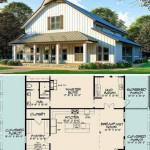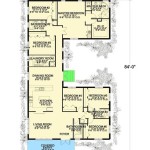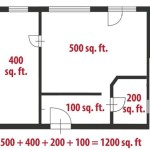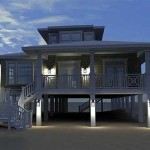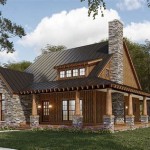Can You Get Original Floor Plans For My House? Navigating the Search for Architectural History
Accessing the original floor plans for a house can be a rewarding endeavor for homeowners. These plans provide valuable insights into the property's construction, layout, and historical context. Whether for renovation projects, historical research, or simply satisfying curiosity, original floor plans offer a unique perspective on a home's evolution.
However, obtaining these plans is not always a straightforward process. The availability of records depends on factors such as the age of the house, its location, and the record-keeping practices of the relevant jurisdictions and organizations. Understanding the potential sources and the challenges involved is crucial for a successful search.
This article will explore the various avenues available for locating original floor plans, discussing the types of repositories that may hold these records and the strategies for navigating the search process. It will also address potential obstacles and alternative resources that can provide similar information if the original plans are unavailable.
Key Point 1: Exploring Municipal and County Records
Local government archives are often the first and most logical place to begin the search for original floor plans. Municipalities and counties typically maintain records related to building permits, property assessments, and zoning regulations, which may include copies of architectural drawings. The accessibility of these records varies depending on the jurisdiction's archiving practices and digitization efforts.
The building permit department is a primary point of contact. When a house was originally constructed, the builder or homeowner would have been required to submit detailed plans to the local authorities for approval. These plans would have been reviewed to ensure compliance with building codes and zoning ordinances. If the municipality has retained these records, they could provide a direct source for the original floor plans.
To access these records, it is typically necessary to contact the building permit department or the municipal archives. A formal request may be required, specifying the property address and any relevant details, such as the approximate year of construction. Some jurisdictions may have online databases that allow for remote searches, while others may require an in-person visit to the archives.
The search process can be complicated by several factors. Older records may be stored in poor condition, making them difficult to access or copy. In some cases, records may have been lost or destroyed due to natural disasters or administrative changes. Furthermore, the quality of the plans themselves may vary, with some being more detailed and legible than others.
Even if the original building permit records are not available, other municipal records may provide clues about the house's construction. Property tax assessment records, for example, may include information about the size and layout of the house. Zoning maps may also provide insights into the original permitted uses of the property and any subsequent modifications.
The presence of historical societies or preservation organizations within the municipality or county can also be a valuable resource. These groups often collect and maintain local historical records, including architectural drawings and related documents. Contacting these organizations may provide access to additional resources or expertise that can aid in the search.
Key Point 2: Consulting Architectural Archives and Libraries
Architectural archives and libraries are specialized repositories that collect and preserve architectural drawings, models, and other documents related to the built environment. These archives may hold original floor plans for houses designed by prominent architects or constructed by specific builders. Accessing these resources can be particularly beneficial for those seeking information about historically significant properties or houses designed by well-known architects.
Many universities and museums maintain architectural archives as part of their collections. These archives often focus on preserving the works of specific architects or architectural firms. Searching the online catalogs of these archives may reveal the existence of original floor plans for a particular house. However, it is important to note that access to these archives may be restricted, and fees may apply for research services or reproductions of documents.
The American Institute of Architects (AIA) also maintains a large archive of architectural drawings and related materials. The AIA Historical Directory of American Architects provides information about architects and their works, which can be a valuable starting point for locating potential sources of floor plans. Contacting the AIA or its local chapters may provide access to additional resources or referrals to other relevant archives.
In addition to institutional archives, private architectural firms may also retain records of their past projects. If the original architect or builder of the house is known, contacting the firm or its successor organization may provide access to original floor plans. However, this approach may be subject to confidentiality agreements or the firm's internal policies regarding access to archival materials.
When searching architectural archives and libraries, it is essential to have as much information as possible about the house, including its address, date of construction, and the names of the architect and builder. This information will help to narrow the search and increase the chances of locating the relevant records.
It is also important to be aware of the limitations of architectural archives. Not all houses are documented in these collections, and the availability of records may vary significantly depending on the archive's focus and collection policies. Furthermore, the quality and condition of the plans may vary, and access may be restricted due to preservation concerns or copyright restrictions.
Key Point 3: Exploring Alternative Sources and Strategies
Even if the original floor plans are not readily available from municipal records or architectural archives, there are alternative sources and strategies that can provide valuable information about the house's layout and construction. These alternatives may involve researching historical maps, consulting with preservation experts, or utilizing modern technology to create new floor plans.
Historical maps, such as Sanborn Fire Insurance Maps, can provide insights into the layout and construction of buildings at different points in time. These maps were originally created for insurance purposes and provide detailed information about building footprints, materials, and uses. While they may not include precise floor plans, they can offer a valuable overview of the house's evolution and any major alterations.
Local historical societies and preservation organizations can also be valuable resources. Members of these groups often have extensive knowledge of local history and may be able to provide information about the house's original construction or any subsequent renovations. They may also have access to private collections of architectural drawings or photographs that are not publicly available.
Another strategy is to consult with preservation architects or building historians. These professionals have expertise in researching and documenting historic buildings. They can analyze the existing structure, conduct historical research, and create accurate floor plans based on their findings. While this approach may be more expensive than accessing existing records, it can provide a comprehensive and reliable representation of the house's original layout.
Modern technology can also be used to create new floor plans of an existing house. Laser scanning and 3D modeling can accurately capture the dimensions and details of the building, allowing for the creation of detailed floor plans and elevations. These technologies can be particularly useful for documenting historic buildings that have undergone significant alterations or for creating virtual tours of the property.
Finally, it is important to consider the possibility that the original floor plans may simply be unavailable. In some cases, records may have been lost, destroyed, or never created in the first place. While this can be disappointing, it is important to accept the limitations of the search and focus on utilizing alternative sources to gather information about the house's history and architecture. Even without the original floor plans, it is often possible to piece together a comprehensive understanding of the property's evolution through careful research and analysis.
Diligent investigation across these varied sources, from local government offices to specialized architectural archives, will improve the chances of discovering original floor plans. Even if the search proves unsuccessful, alternative resources and modern techniques can offer valuable insights into a home's architectural past.

How To Find Building Plans For My House Architecture Design Plan

How To Get Blueprints Of Your House
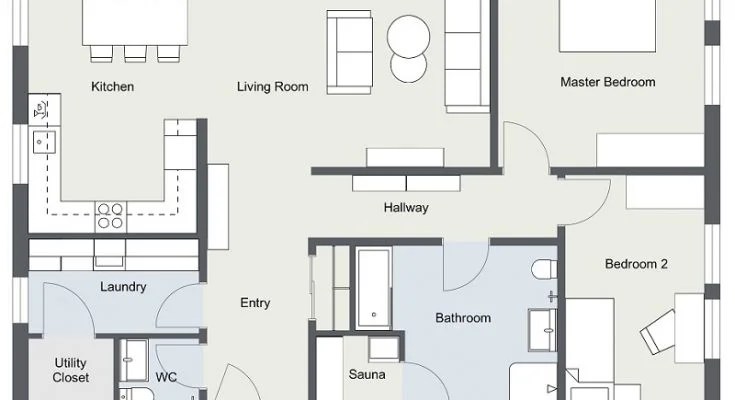
How To Find The Original Floor Plans For Your House

House Plans How To Design Your Home Plan

House Plans How To Design Your Home Plan

House Plans Home Floor Architecturalhouseplans Com

Custom House Floor Plan Design I Modern Plans Home

Design House Plan And 2d Floor Plans With Autocad By Archi Home Fiverr

House Plans How To Design Your Home Plan

Floorplan Now Available As A Lovelace Card Home Assistant Community
Related Posts

